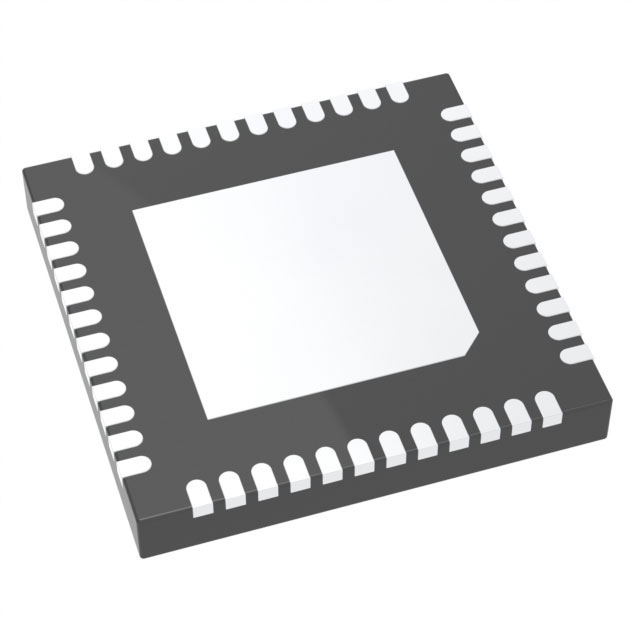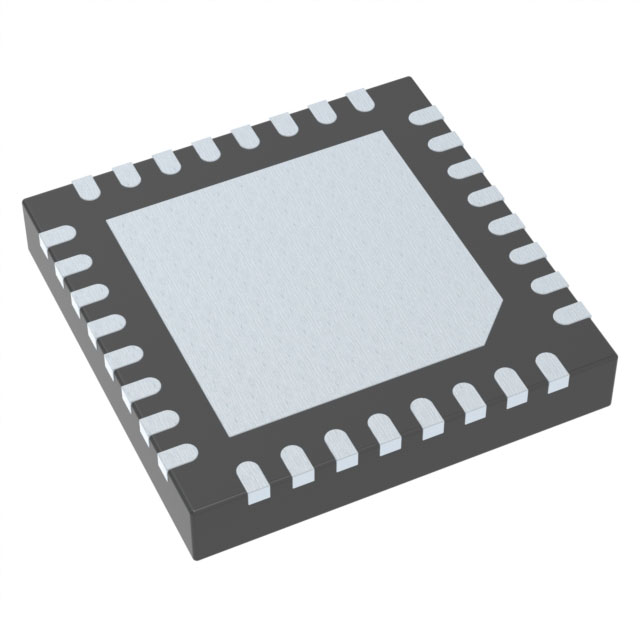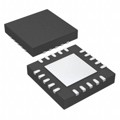Categories
- RF Transceiver ICs(4)
- 1
RF Transceiver ICs (Radio Frequency Transceiver Integrated Circuits) are essential components in modern wireless communication systems. These ICs are designed to both transmit and receive radio frequency signals, enabling two-way communication in a variety of devices, from mobile phones and Wi-Fi routers to satellite systems and IoT devices.
Key Functions of RF Transceiver ICs:
- Transmission and Reception: As the name suggests, a transceiver combines both transmitter and receiver functionality in a single unit. It can modulate and demodulate signals, enabling the sending and receiving of data over radio frequencies.
- Signal Processing: RF transceivers handle the conversion of signals between analog and digital forms. This involves processes like modulation (converting digital signals into radio frequency signals for transmission) and demodulation (converting received RF signals back into usable digital data).
- Frequency Conversion: RF transceivers typically include mixers and local oscillators to convert signals between different frequency bands (such as from baseband to intermediate frequency or RF signals), allowing communication over various wireless protocols.
Key Components of RF Transceiver ICs:
- RF Front End: This includes amplifiers (low noise amplifiers for receiving, power amplifiers for transmission) and filters to clean up signals before they are transmitted or after they are received.
- Baseband Processing: This part of the transceiver handles the modulation and demodulation of digital signals, along with the error correction and encoding needed for reliable communication.
- Mixers: Mixers are used to shift the frequency of the signal, allowing communication on different bands, such as up-converting a baseband signal to a higher frequency for transmission or down-converting received high-frequency signals to baseband.
- Local Oscillator: Generates a frequency used to mix the incoming or outgoing signals to the desired operating frequency.
- Analog-to-Digital (ADC) and Digital-to-Analog (DAC) Converters: These convert the digital data to analog signals for transmission and vice versa for reception.
Key Features of RF Transceiver ICs:
- Wide Frequency Range: Many RF transceivers can operate across a broad range of frequencies, from a few MHz for short-range communication (like RFID) to several GHz for longer-range wireless protocols (like Wi-Fi, Bluetooth, and cellular networks).
- Low Power Consumption: Power efficiency is crucial in many applications, especially in portable and battery-powered devices. Many RF transceivers are designed to operate with minimal power usage, extending battery life in mobile devices.
- Integration: RF transceiver ICs often integrate multiple functions into a single chip, reducing the need for separate components and simplifying circuit design. This includes integration of power amplifiers, low noise amplifiers, mixers, and filters.
- Data Rates: The speed at which the transceiver can handle data transmission and reception is an important feature. Modern RF transceivers can support high data rates, enabling fast wireless communication for applications like streaming, video conferencing, and high-speed internet access.
Applications:
RF transceiver ICs are used in a wide range of wireless communication applications:
- Cellular Communication: In smartphones, tablets, and cellular base stations, RF transceivers enable communication on various mobile networks (e.g., 3G, 4G, 5G).
- Wi-Fi and Bluetooth: These ICs are used in wireless networking devices such as routers, laptops, and IoT devices to transmit and receive data over short-range wireless connections.
- Satellite and Broadcasting: RF transceivers play a critical role in satellite communication systems, where signals need to be sent to and received from space-based satellites.
- IoT Devices: In the rapidly growing Internet of Things (IoT) space, RF transceivers are used in sensors, wearables, smart home devices, and other connected technologies for reliable data transmission.
- Radios and Television: RF transceivers are used in radio and TV transmission systems, enabling the broadcasting and receiving of signals across large areas.
- Radar and Navigation Systems: These ICs are also used in radar systems and GPS receivers, where accurate signal transmission and reception are vital for distance measuring and object detection.
Types of RF Transceiver ICs:
- Single-Band Transceivers: Designed to operate on a single frequency band, these are commonly used in applications like Wi-Fi or Bluetooth, where the communication typically occurs within a specific frequency range.
- Multi-Band Transceivers: These can operate on multiple frequency bands, allowing devices to support various wireless standards such as GSM, LTE, and Wi-Fi within a single transceiver.
- Software-Defined Radio (SDR) Transceivers: These transceivers use programmable hardware and software to support a wide range of communication standards and protocols, providing flexibility for wireless communication systems.
- Integrated RF Transceivers: These combine the RF front end and baseband processing in a single chip, providing a compact solution for low-power and small-size applications.
Advantages of RF Transceiver ICs:
- Compact and Integrated: By integrating multiple functions into a single chip, RF transceivers reduce the size, complexity, and cost of wireless communication systems.
- Cost-Effective: By combining both the transmitter and receiver into one component, these ICs reduce the number of components needed, making designs more cost-effective.
- Versatility: RF transceivers can be used in a wide variety of wireless applications, from consumer electronics to industrial and military uses.
Challenges:
- Interference and Noise: RF transceivers must deal with interference from other devices and noise in the RF spectrum, which can affect signal quality and reliability.
- Regulatory Constraints: Different regions have different frequency regulations for wireless communication. RF transceivers must comply with local regulations regarding frequency use and transmission power.
In summary, RF Transceiver ICs are fundamental components for modern wireless communication, enabling the seamless transmission and reception of radio signals in a wide range of applications. By integrating multiple functions into one chip, these ICs contribute to the development of compact, efficient, and versatile wireless devices.









